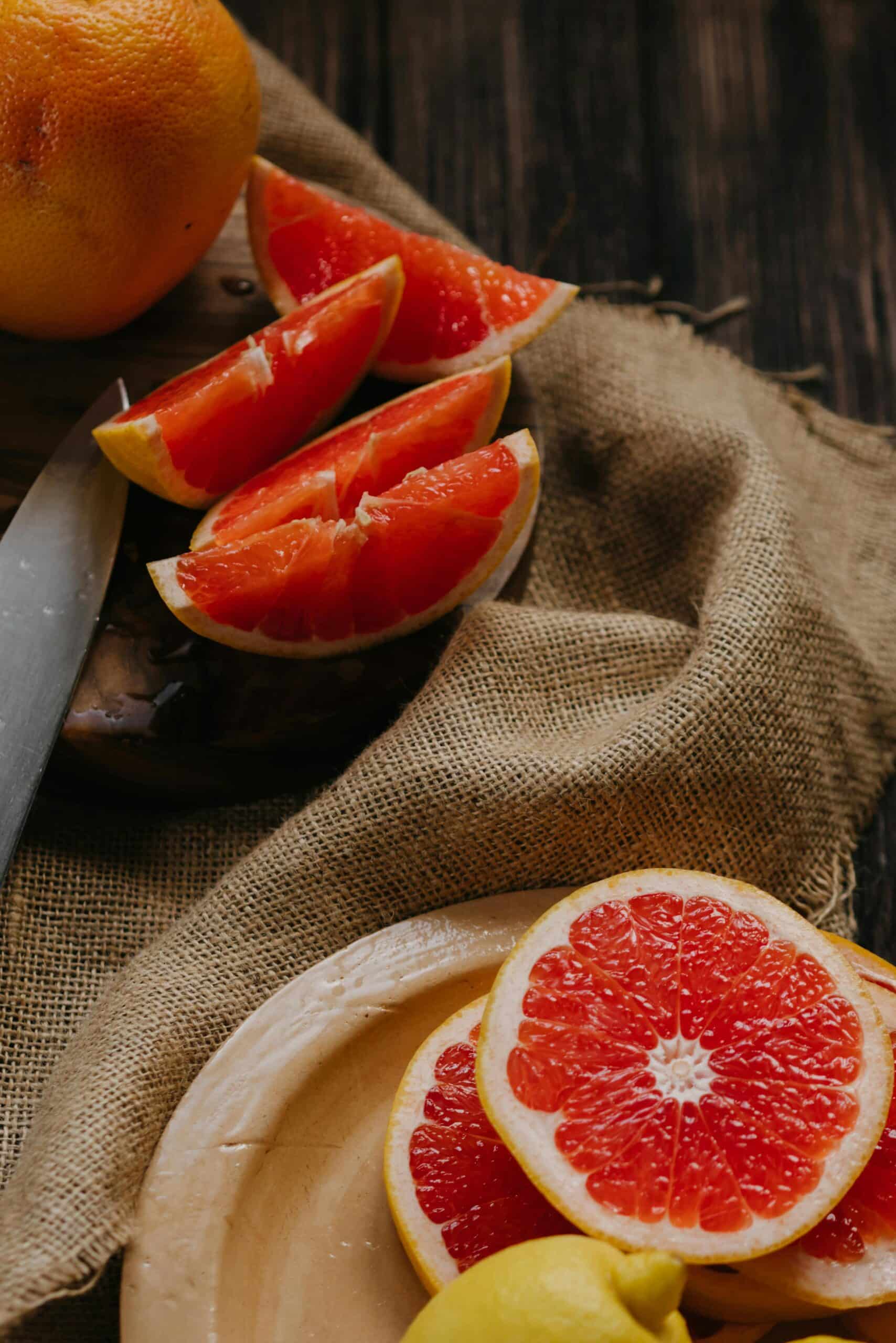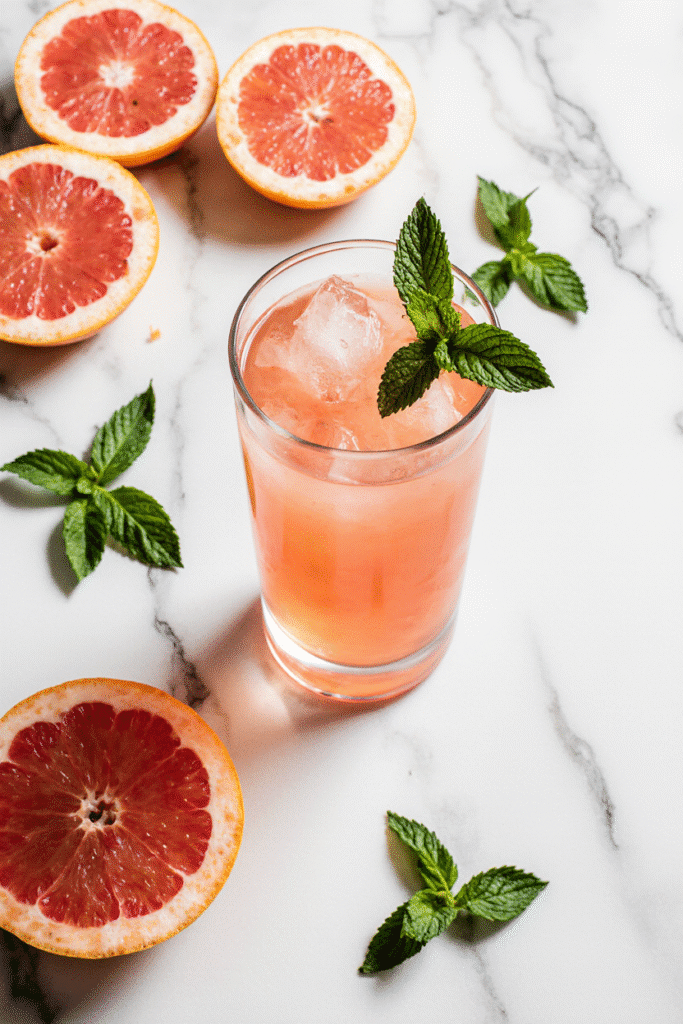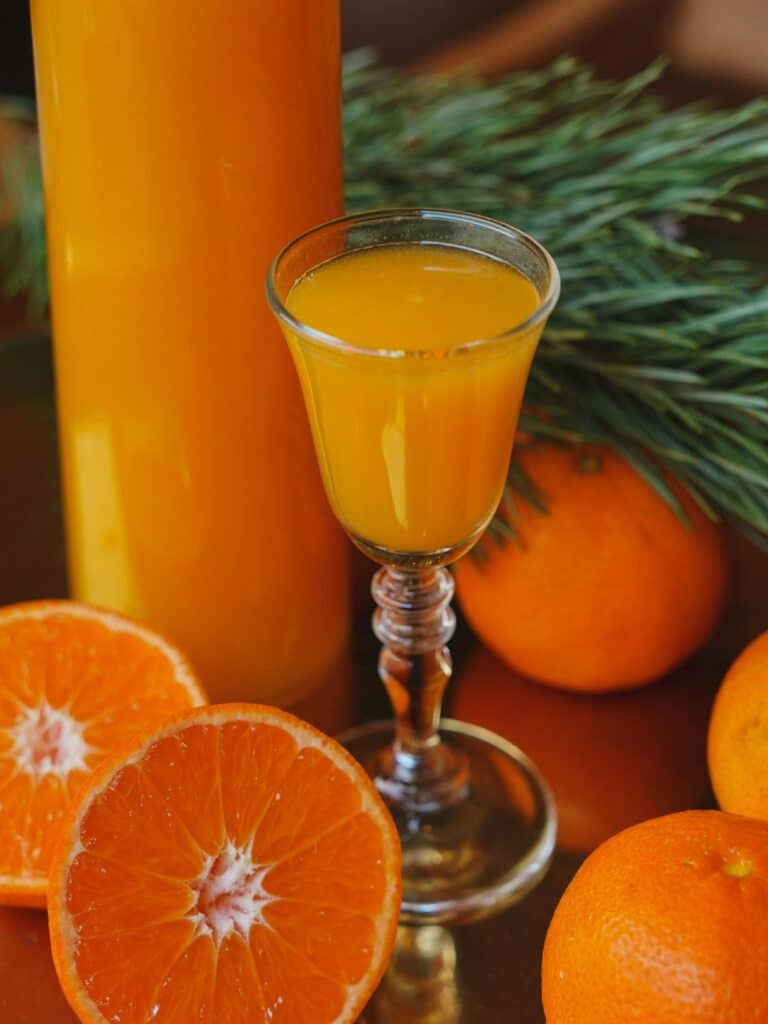Grapefruit Juice Grapefruit: Benefits, Safety & Smart Citrus Tips
Grapefruit juice and grapefruit are often praised for their refreshing flavor and rich nutrient content, but there’s more to these citrus powerhouses than meets the eye. In this guide, we’ll explore the health benefits, differences between the fruit and juice, and surprising facts about how grapefruit can interact with medications. From pairing it with cranberry to understanding how much juice is actually in a grapefruit, this article gives you everything you need to enjoy grapefruit safely and smartly. Whether you’re blending it into your cleanse green juice or sipping it solo, you’ll want to read this first.

Grapefruit Juice Grapefruit
Ingredients
- 2 medium grapefruits preferably pink or ruby red
- 1 teaspoon honey optional
- 1 cup cold water or ice cubes
- Fresh mint leaves for garnish optional
Instructions
- Roll grapefruits on the counter to loosen juice inside.
- Cut each grapefruit in half and juice using a citrus press or handheld reamer.
- Strain juice to remove seeds and extra pulp (optional).
- Pour juice into a pitcher and stir in honey, if using.
- Add cold water or ice to chill and lightly dilute.
- Serve in glasses and garnish with mint or a grapefruit wedge.
Notes
- Use ruby red grapefruit for a naturally sweeter juice.
- Store juice in a glass container to maintain flavor.
- Mix with cranberry or orange juice for variety.
- If you’re taking medications, consult your doctor before drinking grapefruit juice.
Nutrition
Table of content
Table of Contents
Grapefruit Juice Grapefruit – My Citrus Connection
A Kitchen Memory: My Grandmother’s Citrus Ritual
I still remember standing on a little stool in my grandmother’s kitchen, squeezing ruby-red grapefruits into a ceramic pitcher. She’d smile as I struggled with the hand juicer, the fresh, tangy scent filling the room. “That’s the good kind of sour,” she’d say. Those mornings were simple but magical. We never bought bottled juice—everything was made fresh, and always paired with something warm like oatmeal or scrambled eggs.
Fast-forward to today, and grapefruit juice still holds a special place at my breakfast table. Whether I’m stirring it into a homemade cleanse green juice or pouring it straight over ice, it’s my go-to refreshment when I want something bright, tart, and good for my body. But, as I learned while researching for Easy Meals Table, grapefruit juice isn’t always so simple. Behind its sunny appearance lies a complex story involving nutrients, health perks, and even risks.
The Health Boost: Why Grapefruit Packs a Punch
Grapefruit is one of nature’s most nutrient-dense fruits. With just half a fruit, you’re already getting more than 60% of your daily vitamin C needs. That means your immune system gets a citrus-powered kick, which is especially helpful during cold and flu season.
But the benefits don’t stop there. Grapefruit also contains:
- Vitamin A – Great for eye health and immunity
- Potassium – Important for heart and nerve function
- Fiber – Supports digestion and helps you feel full
- Antioxidants like naringin and narirutin – May reduce inflammation and protect against chronic diseases
Compared to other juices, grapefruit juice stands out for being naturally low in sugar, especially if you drink it unsweetened. That’s why it’s often recommended in weight management and detox programs. In fact, a cold glass of grapefruit juice pairs perfectly with a light, healthy breakfast like Weight Watchers overnight oats.

But Wait—There’s a Catch (And It’s a Serious One)
Despite its benefits, grapefruit juice also comes with a unique warning: it can interfere with certain medications. The compounds in grapefruit can block enzymes in the small intestine (specifically CYP3A4), which your body uses to metabolize many prescription drugs. This means that drinking grapefruit juice could cause a higher concentration of the medication to stay in your bloodstream longer, increasing the risk of side effects or toxicity.
Here are some examples of medications that could be affected:
Drug Type Common Examples
Statins Atorvastatin, Simvastatin
Blood Pressure Medications Felodipine, Nifedipine
Organ Transplant Drugs Cyclosporine
Anti-Anxiety Medications Buspirone
Corticosteroids Budesonide
Heart Rhythm Drugs Amiodarone
Antihistamines Fexofenadine
Before drinking grapefruit juice or eating the fruit, be sure to consult your doctor or pharmacist if you’re taking any of these medications.
Grapefruit Juice vs. Grapefruit: Not Always the Same
Here’s where many people get confused: “Is 100% grapefruit juice the same as eating a grapefruit?”
The answer is—not quite. Although both offer similar vitamins and antioxidants, grapefruit juice typically doesn’t provide the fiber that whole grapefruit does. A whole grapefruit has around 2 grams of fiber, which slows sugar absorption and keeps your digestion steady. In contrast, juice causes a quicker spike in sugar levels and doesn’t provide the same feeling of fullness.
So, if you’re watching your sugar intake or want to stay fuller longer, eating the fruit may be the better choice. But if you’re pairing it with turkey lunch meat in a savory wrap or using it in a drink mix, juice might be more convenient.
How Much Juice Is in a Grapefruit – And What Pairs Well With It?
From Fruit to Glass: How Much Juice Does One Grapefruit Yield?
If you’ve ever stood over a juicer, wondering if just one grapefruit will fill your glass, you’re not alone. It’s one of the most common questions home cooks ask: How much grapefruit juice is in a grapefruit?
The answer? It depends on the size and variety, but on average, one medium grapefruit yields about ½ to ⅔ cup of juice, or roughly 4 to 5 ounces. Larger ruby red grapefruits might give you closer to ¾ cup, especially if they’re in peak season and extra juicy.
| Grapefruit Size | Approx. Juice Yield |
|---|---|
| Small (4 oz) | ¼ cup |
| Medium (6–7 oz) | ½ to ⅔ cup |
| Large (8+ oz) | ¾ to 1 cup |
If you’re trying to make a fresh-pressed juice blend for two, you’ll typically need 3–4 medium grapefruits to get around 2 full cups of juice.
When it comes to flavor, fresh-squeezed always wins. Bottled juice often contains added sugars or goes through pasteurization that changes the taste. If you’re pairing it with a light breakfast like breakfast cereal Kashi, fresh juice delivers that zingy brightness your taste buds crave.

Do Cranberry and Grapefruit Go Together? A Surprising Duo
Now let’s talk about flavor pairings. One of the most underrated duos in the juice world? Cranberry and grapefruit.
At first glance, these two tart fruits might seem like they’re competing for attention—but they actually balance each other out. Cranberries bring deep, earthy acidity, while grapefruit adds a bright, citrusy kick. Together, they form a complex, invigorating juice that’s both refreshing and functional.
Here’s why they work so well:
Both are rich in antioxidants: Cranberries contain proanthocyanidins that support urinary tract health, while grapefruit has vitamin C and naringenin to support immune function.
The tartness is softened: Cranberries can be very sharp on their own, but grapefruit’s juicy brightness softens that edge without needing to add sugar.
In terms of appearance, it’s striking—radiating a rich, ruby-red color with flair. The aroma? Crisp, clean, and uplifting.
You can mix equal parts grapefruit and cranberry juice (preferably unsweetened), or go heavier on grapefruit if you prefer a lighter taste. Add a splash of sparkling water, a few sprigs of mint, and you’ve got a stunning brunch mocktail. It’s also a great way to stay hydrated with flavor, especially when you want a break from plain water.
This pairing is also excellent in blended drinks. Try blending grapefruit, cranberry, and watermelon for a bold, fruity juice inspired by this watermelon juice recipe. The watermelon adds natural sweetness without overpowering the citrus elements.
Nutritional Power: 100% Juice, No Filler
If you’re choosing 100% grapefruit juice, you’re still getting plenty of nutritional value—just not the fiber you’d get from eating the whole fruit.
Here’s what a cup (8 oz) of unsweetened grapefruit juice typically contains:
Calories: 90
Carbs: 21g
Sugars: 20g (naturally occurring)
Vitamin C: 100%+ Daily Value
Potassium: 350mg
Vitamin A: 10% Daily Value
As you can see, 100% grapefruit juice is good for immune support, hydration, and cellular health. It’s a simple way to get nutrients into your morning, whether you’re sipping it straight or incorporating it into a citrus-forward smoothie or cleanse green juice.
What to Look for on the Label
If you’re buying store-bought grapefruit juice, always check the label. Look for:
“100% grapefruit juice” on the front
No added sugars
No artificial flavors or preservatives
Cold-pressed or not-from-concentrate (if possible)
Avoid blends that list “grapefruit-flavored drink” or “juice cocktail” as those often include high-fructose corn syrup or added sweeteners.
You can also make your own version of 100% juice blends by mixing freshly squeezed grapefruit with a splash of cranberry or citrus-based juice, giving you full control over what goes into your glass.
Serving Ideas for Grapefruit Juice Lovers
If you’re wondering how to enjoy grapefruit juice beyond just drinking it, here are some delicious serving ideas:
Grapefruit Vinaigrette: Mix juice with olive oil, Dijon mustard, and a touch of honey for a zesty salad dressing.
Citrus Glaze for Chicken or Fish: Combine grapefruit juice, garlic, and rosemary for a vibrant glaze over grilled proteins.
Frozen Citrus Pops: Blend grapefruit juice with a splash of honey and freeze in molds for refreshing summer popsicles.
For a refreshing mocktail, combine grapefruit juice, sparkling water, and mint—it’s a crisp, alcohol-free alternative to cocktails.
And if you’ve got a sweet tooth, try serving grapefruit slices alongside Middle Eastern desserts like almond cookies or date bars—the bitterness of the fruit beautifully offsets rich, syrupy treats.

Grapefruit Juice Grapefruit – Which Delivers More Nutrition?
Grapefruit Juice Grapefruit – Is One Really Better?
Let’s settle the debate: Is 100% grapefruit juice the same as eating a grapefruit? They both come from the same juicy citrus fruit, but when it comes to health, flavor, and function, they’re definitely not identical. Whether you’re enjoying a glass of fresh-squeezed grapefruit juice or digging into a grapefruit half with a spoon, each form brings different benefits to the table.
At Easy Meals Table, we love spotlighting ingredients that are both versatile and nourishing. Grapefruit juice grapefruit options offer vibrant taste and powerful nutrients—but they don’t function the same in your body. If you’re aiming to make the healthiest choice, you’ll want to understand the subtle but important differences between the juice and the whole fruit.
Nutritional Comparison: Juice vs. Whole Fruit
If you’re deciding between grapefruit juice and whole grapefruit, here’s how they stack up nutritionally. Both provide essential vitamins, but the way your body processes them can differ quite a bit.
Calories: One medium grapefruit contains about 52 calories, while an 8-ounce glass of grapefruit juice delivers around 90 calories. That’s nearly double the energy for the same citrus source.
Sugar: Grapefruit juice has more natural sugars—about 20 grams per cup—compared to the 8 grams found in a single grapefruit. This means grapefruit juice grapefruit consumption may spike blood sugar faster, especially without the buffering effect of fiber.
Fiber: This is where the whole fruit clearly wins. Grapefruit contains 2 grams of dietary fiber, supporting digestion and satiety. Grapefruit juice, however, contains zero fiber, making it less effective at keeping you full.
Vitamin C: Both options are rich in vitamin C, but grapefruit juice often delivers more—sometimes over 100% of your daily value per cup. A whole grapefruit provides around 64% of your daily vitamin C needs.
Satiety (Fullness): Eating a whole grapefruit is more satisfying because of the fiber and volume. Grapefruit juice, while hydrating, doesn’t leave you feeling as full.
So when it comes to nutrition, grapefruit juice grapefruit choices serve different needs. If you’re looking for quick hydration and vitamin C, go for the juice. If satiety, fiber, and slower sugar absorption matter more to you, the whole fruit is the better option.
Grapefruit Juice Grapefruit: The Fiber Factor
The most obvious difference? Fiber. A whole grapefruit provides 2 grams of digestion-friendly fiber. That helps you feel full longer, supports gut health, and slows the absorption of sugar into your bloodstream. On the other hand, grapefruit juice contains no fiber at all. That means the natural sugars in the juice hit your system faster, potentially causing quick spikes in blood glucose.
If you’re trying to lose weight, manage hunger, or stabilize energy levels, eating the whole fruit is the better option. Pair it with something protein-rich like turkey lunch meat or a fiber-boosting Weight Watchers overnight oats recipe for a balanced meal.
When Grapefruit Juice is the Right Pick
That doesn’t mean grapefruit juice doesn’t have its place. It’s hydrating, quick to consume, and excellent for recipes. Grapefruit juice adds brightness to vinaigrettes, marinades, and smoothies. It also works well in citrus mocktails or popsicles on a hot day.
Grapefruit juice grapefruit-based drinks are also a favorite in breakfast settings. If chewing fruit isn’t your thing—or if you need to blend it into a drinkable snack—juice may be more practical. Just remember to choose 100% grapefruit juice, not sugary blends or “juice cocktails” that contain added sweeteners.
Portion Control Still Matters
With grapefruit juice grapefruit consumption, it’s easy to overdo it. Juice goes down quickly and offers no fiber to slow you down. A typical glass (8 oz) has double the sugar of a single grapefruit and more calories. That’s why dietitians suggest limiting juice to one serving per day and pairing it with whole foods.
If you love the taste of grapefruit juice but want to reduce sugar, try watering it down with sparkling water. This makes a refreshing mocktail and keeps the flavor without the full sugar load. You can even mix grapefruit juice with other healthy blends like cleanse green juice to stretch the nutrients further.
Flavor and Texture Preference: It’s Personal
Ultimately, the choice between grapefruit juice and grapefruit depends on what matters most to you. Want satiety and gut benefits? Go with whole grapefruit. Prefer ease and speed? Juice wins. Many of our readers alternate between both depending on the meal, which is a great strategy to keep your routine fresh and balanced.
If you’re planning a brunch, serve sliced grapefruit alongside light Middle Eastern desserts to balance sweet with tart. Or, make a grapefruit juice glaze to drizzle over cakes like our Oreo ice cream cake for a surprising citrus twist.
Grapefruit Juice Grapefruit Safety – What You Need to Know About Medications
Grapefruit Juice Grapefruit – A Health Hero with a Hidden Risk
It might surprise you, but that refreshing glass of grapefruit juice or that juicy bite of grapefruit could actually clash with your medications. While the grapefruit juice grapefruit combo is known for boosting immunity and delivering powerful antioxidants, not all its effects are positive.
This citrus superstar contains compounds that can alter how your body processes certain prescription drugs. And the impact can be serious. That’s why understanding grapefruit juice grapefruit safety is essential—especially if you take medications daily.

Why Grapefruit Juice Grapefruit Interacts with Medicine
The culprit is a natural compound in grapefruit called furanocoumarin. It interferes with enzymes in your small intestine—specifically CYP3A4 enzymes—that normally help break down many medications. When grapefruit juice grapefruit is consumed, it blocks this enzyme, which means more of the drug enters your bloodstream.
That might sound like a good thing, but it’s not. Instead of being safely broken down, the medicine can reach levels that are too high, increasing your risk of dangerous side effects. Even drinking grapefruit juice a few hours before taking a medication can trigger this interaction.
According to the FDA, over 85 medications are known or suspected to interact with grapefruit juice grapefruit products. For some, the consequences can be life-threatening.
Common Medications That Grapefruit Juice Grapefruit Affects
Here are some of the main drug types that are known to be affected by grapefruit and its juice:
- Statins (for cholesterol): Atorvastatin, Simvastatin
- Blood pressure drugs: Felodipine, Nifedipine
- Anti-anxiety medications: Buspirone
- Heart rhythm stabilizers: Amiodarone
- Antihistamines: Fexofenadine
- Immunosuppressants: Cyclosporine (used after organ transplants)
- Corticosteroids: Budesonide
If you’re prescribed one of these, grapefruit juice grapefruit combinations might not be safe for you. Drinking just one glass of juice could cause a medication overdose effect, even if you’re taking your usual dose.
What the FDA Says About Grapefruit Juice Grapefruit Safety
The U.S. Food and Drug Administration has made it clear: always check the label on your medications, and consult your pharmacist or doctor if grapefruit is part of your diet. Some medications carry warnings about grapefruit right on the bottle, but others don’t. That’s why it’s so important to ask.
Don’t assume your grapefruit juice grapefruit habit is harmless just because no one’s mentioned it. These interactions aren’t rare. They’re well-documented and widely studied.
Even if you’re only consuming grapefruit a few times a week, the enzyme-blocking effect can last up to 72 hours. That means even occasional use can have lasting impacts on your medication levels.
How to Protect Yourself (and Still Enjoy Grapefruit)
So, what can you do if you love grapefruit juice grapefruit benefits but also take prescriptions? Here are some steps to stay safe:
- Talk to your doctor – Bring up grapefruit during your next appointment.
- Ask your pharmacist – They can check your medication list for grapefruit-related risks.
- Read medication guides – Look for “avoid grapefruit” or similar warnings.
- Explore alternatives – Some medications have substitutes that don’t interact with grapefruit.
You may also want to switch to other citrus fruits like oranges or tangerines that don’t affect enzyme activity. Or blend grapefruit with other juices, like in this cleanse green juice, to dilute the concentration and flavor.

The Bright Side: Grapefruit Juice Grapefruit Is Still Healthy
Despite the warnings, grapefruit juice grapefruit remains a smart choice for many people. If you’re not taking medications that interact with it, the health benefits are impressive. You’re getting vitamin C, potassium, and powerful antioxidants like naringin and narirutin that help fight inflammation and support overall wellness.
Enjoying grapefruit juice grapefruit as part of a balanced breakfast—perhaps alongside Weight Watchers overnight oats or breakfast cereal Kashi—can kickstart your day in a vibrant, healthy way.
Just remember, it’s not about fear—it’s about being informed. With the right precautions, you can continue to enjoy grapefruit juice grapefruit safely.
Is 100% grapefruit juice the same as eating a grapefruit?
While both options come from the same fruit, 100% grapefruit juice and whole grapefruit offer different health experiences. Eating a whole grapefruit gives you natural fiber, which slows sugar absorption and supports digestion. Grapefruit juice grapefruit, however, delivers quicker hydration and a more concentrated dose of vitamin C. If your goal is satiety and fiber intake, the grapefruit is better. But when convenience and immune support matter, grapefruit juice grapefruit fits the bill.
In most cases, it’s not about choosing one over the other—it’s about how you integrate grapefruit juice grapefruit into your day. Enjoy the fruit with breakfast and the juice with lunch, for example.
What is 100% grapefruit juice good for?
100% grapefruit juice grapefruit is excellent for boosting immune health, supporting hydration, and fueling your body with antioxidants. Rich in vitamin C, potassium, and plant compounds like naringin, it helps protect cells from oxidative stress. Many use grapefruit juice grapefruit to stay energized throughout the day or as a post-workout refreshment.
Drinking grapefruit juice grapefruit is also a great way to start the morning. Try adding it to your breakfast alongside Weight Watchers overnight oats or sipping it in a healthy citrus blend. Grapefruit juice grapefruit makes wellness feel bright and easy.
Do cranberry and grapefruit go together?
Absolutely! The tartness of cranberry paired with the bright citrus flavor of grapefruit juice grapefruit creates a bold and refreshing taste. Many juice lovers enjoy this duo because it blends beautifully while boosting your antioxidant intake. Whether you mix equal parts cranberry and grapefruit juice grapefruit or experiment with ratios, the result is always uplifting.
If you’re making a mocktail, a splash of sparkling water and a slice of lime added to your cranberry and grapefruit juice grapefruit blend can turn a simple drink into something extraordinary. For a light snack, pair it with breakfast cereal Kashi for balance.
How much grapefruit juice is in a grapefruit?
A single medium grapefruit yields about ½ to ⅔ cup of juice. If you’re trying to make a full 8-ounce glass of grapefruit juice grapefruit, you’ll typically need one and a half grapefruits. This makes fresh-squeezed grapefruit juice grapefruit easy to incorporate into your daily routine—just two fruits can power your morning with bright citrus energy.
People often ask how much they’ll need when making a batch for two. In most cases, 3 grapefruits give you a full two cups of grapefruit juice grapefruit, perfect for a couple of servings. You can also stretch it by combining it with water or other fruit juices.
Can I drink grapefruit juice grapefruit if I take medications?
This is where grapefruit juice grapefruit becomes more complex. Certain medications interact negatively with grapefruit juice grapefruit due to compounds that inhibit enzymes in your intestines. This can cause some drugs to become too concentrated in your bloodstream, increasing side effects.
If you take medications like statins, blood pressure drugs, or anti-anxiety medications, consult your doctor before consuming grapefruit juice grapefruit. Even one glass could trigger a reaction. While grapefruit juice grapefruit offers incredible health benefits, it’s important to prioritize safety. Always read your medication labels for grapefruit warnings.
Is it better to eat grapefruit or drink the juice?
It depends on your goals. Whole grapefruit provides fiber, greater satiety, and slower sugar absorption. Grapefruit juice grapefruit gives faster hydration, a higher vitamin C punch, and blends well in recipes. Many people enjoy both—grapefruit juice grapefruit in the morning and a grapefruit snack later.
Fiber is the big difference. Grapefruit juice grapefruit lacks the fiber that slows digestion, so pairing the juice with high-fiber foods can balance the effect. Try enjoying your grapefruit juice grapefruit with turkey lunch meat or healthy desserts to round out your meal.
Conclusion: Grapefruit Juice Grapefruit – Smart, Bold, and Balanced
Grapefruit juice grapefruit may seem simple, but it’s one of those ingredients that brings both bright flavor and serious nutritional power to your daily routine. Whether you’re sipping a cold glass with breakfast or slicing a fresh grapefruit as a snack, you’re fueling your body with essential vitamins, antioxidants, and hydration.
Still, with grapefruit juice grapefruit, balance matters. For many, it’s a health booster. But for others—especially those taking specific medications—it can pose risks. That’s why being informed is just as important as enjoying your food. Always check with your doctor if you’re unsure about interactions, and don’t assume every citrus is risk-free.
From my own kitchen to yours, grapefruit juice grapefruit has been part of meals that feel both nourishing and nostalgic. It’s vibrant, zesty, and always worth a spot on your table—just make sure it fits your lifestyle and health needs.


1 thought on “Grapefruit Juice Grapefruit”